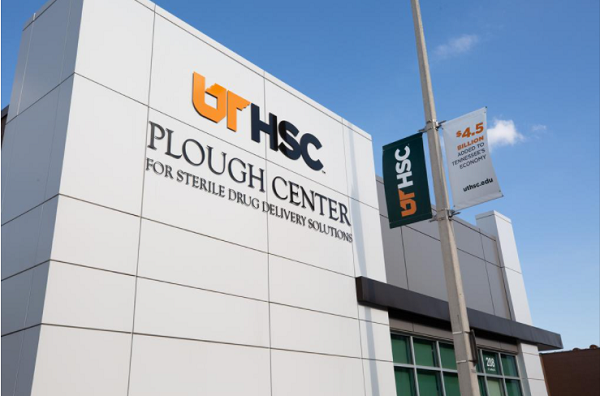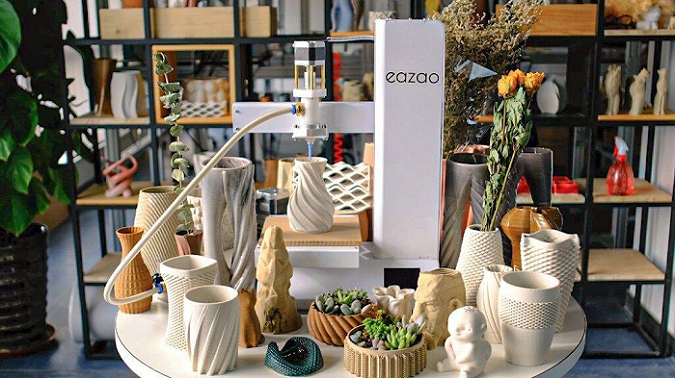3D Printing News Briefs, April 22, 2021: Philips Lighting, Cerambot, Revotek & UTHSC, ENS Lyon, Université de Lorraine, & University of Victoria
In today’s 3D Printing News Briefs, we’ll start off with business and a new 3D printer, and then some interesting research. So without further ado, let’s dive right in!
Philips Lighting Smart Hub Opens
Signify, the company behind the business of Philips Lighting, has opened the new Philips Smart Hub flagship store at the UOA Business Park, Shah Alam in Malaysia. The company offers many lighting products, like WiZ and Philips Hue, for sale right in the store, but that’s not all it offers: Signify will also provide its very first 3D printing lighting service at the store, which will allow customers to create custom lighting items tailored to their professional or personal tastes.
The cost of this new service starts at RM399 (about $97), and is offered at the new flagship store in the Klang Valley. It’s also available for online purchase via LazMall and Shopee Mall. All lighting designs start from a variety of base templates, and multiple features can be personalized, including materials, shapes, and textures, and it’s even possible to add custom logos and branding. 100% recyclable polycarbonate material is used to print the lighting products, and combined with the decrease of energy consumption from production all the way to delivery, Philips Lighting expects the whole process to reduce its carbon footprint by 76%.
Cerambot Launches 2nd Generation Ceramic 3D Printer
After its first ceramic 3D printer enjoyed major success two years ago as the most-funded ceramic 3D printer on Kickstarter, Cerambot has launched the Eazao, its second generation ceramic 3D printer with few features and enhanced performance. It has a new Cartesian design, which is a more rigid system than typical Delta printers and means a better surface finish and less print errors. The new Eazao has a power-loss recovery system that will automatically resume your print job if the power goes out unexpectedly, and with a maximum print speed of 40mm/s, it’s definitely faster than Cerambot’s first generation printer. But the coolest feature of the Eazao is that you don’t need an expensive kiln to finish your 3D printed pieces: its specially made, colored glazes are designed to work in a home microwave, which makes it a great system for families to use together.
“Our first generation ceramic 3D printer was a huge success and earned us many fans around the world. In fact, that community of users was key in helping to guide us on our next generation design. We took all the feedback we received and worked hard to improve nearly every aspect of our new printer,” explained Cerambot’s CEO Jony Liu. “Cerambot Eazao is the culmination of our efforts and it makes the ceramic 3D printing experience better than ever with a more rigid Cartesian structure, faster print speeds, and a more intuitive user-friendly design. Now anyone can get creative and start printing ceramics fast.”
The Cerambot Eazao is available now on Kickstarter.
Revotek 3D Bioprinting Blood Vessels for FDA Clinical Trials

University of Tennessee Health Science Center (UTHSC)’s Plough Center for Sterile Drug Delivery Solutions in the Medical District. Image courtesy of Brandon Dill | UTHSC
Biotechnology company Revotek, based in Chengdu, China, has long been working to 3D print blood vessels, and is now bringing its innovative technology to Memphis, Tennessee. Steven Goodman, PhD, the Vice Chancellor for research at University of Tennessee Health Science Center (UTHSC), has known Revotek’s co-founder and Chief Science Officer, Y. James Kang, PhD, a long time, and after Kang visited Memphis at Goodman’s invitation in 2017 to learn more about the university’s bioscience infrastructure, and FedEx Corporation’s shipping capabilities, Revotek chose UTHSC’s Memphis Institute of Regenerative Medicine (MIRM) as its US base of operations. As for its blood vessels, Revotek researchers culture stem cells, which have been isolated from fat tissue, and prepare them as biosynspheres, or bioinks. The company’s 3D bioprinter then stacks the bioink to create a blood vessel, which is then covered in a prosthetic vascular graft. With the help of FedEx, a vessel graft can eventually be delivered to a patient within hours. UTHSC’s Plough Center for Sterile Drug Delivery Solutions, an FDA-certified facility, will be the US production facility for these bioprinted blood vessels, with the end goal being human trials.
In an all-too familiar refrain, the COVID-19 pandemic threw a wrench in the plans, as Revotek employees and researchers at the West China Medical Center of Sichuan University had a hard time getting to work, and due to the closure of the US consulate in Chengdu, business travel visas were a no-go. So, while the technology has continued to progress in China, Revotek had to cancel its plans to submit for FDA approval of human trials in 2020. But once travel restrictions have been lifted, Revotek staff will return to Memphis, and Goodman says that FDA approval and the beginning of its clinical trials, contracted by the Clinical Trials Network of Tennessee (CTN2), should hopefully begin in early 2022.
Research Paper on Closed Space-Filling Curves for 3D Printing
A team of researchers from the Université de Lorraine, ENS Lyon, and the University of Victoria published a paper, titled “Closed space-filling curves with controlled orientation for 3D printing,” about their work looking into “the optimization of closed space-filling curves under orientation objectives.” Users can print solid plates in one continuous extrusion motion if they solidify the material along the closed curve. So basically, if you have orientation control, then the deposition of your 3D printer will be more easily able to align with certain directions in different areas, or create “a locally uniform distribution of orientations,” which can then pattern the “solidified volume” in a controlled way. In this paper, the team figures out how to control the printer’s orientation while it covers a planar surface with a “non-intersecting, space-filling closed trajectory.”
“Our optimization framework proceeds in two steps,” the researchers wrote. “First, we cast a combinatorial problem, optimizing for Hamiltonian cycles within a specially constructed graph. We rely on a stochastic optimization process based on local operators that modify a cycle while preserving its Hamiltonian property. Second, we use the result to initialize a geometric optimizer that improves the smoothness and uniform coverage of the cycle while further optimizing for alignment and orientation objectives.”
Read the full research paper here to learn more about their work.
Subscribe to Our Email Newsletter
Stay up-to-date on all the latest news from the 3D printing industry and receive information and offers from third party vendors.
You May Also Like
Profiling a Construction 3D Printing Pioneer: US Army Corps of Engineers’ Megan Kreiger
The world of construction 3D printing is still so new that the true experts can probably be counted on two hands. Among them is Megan Kreiger, Portfolio Manager of Additive...
US Army Corps of Engineers Taps Lincoln Electric & Eaton for Largest 3D Printed US Civil Works Part
The Soo Locks sit on the US-Canadian border, enabling maritime travel between Lake Superior and Lake Huron, from which ships can reach the rest of the Great Lakes. Crafts carrying...
Construction 3D Printing CEO Reflects on Being Female in Construction
Natalie Wadley, CEO of ChangeMaker3D, could hear the words of her daughter sitting next to her resounding in her head. “Mum, MUM, you’ve won!” Wadley had just won the prestigious...
1Print to Commercialize 3D Printed Coastal Resilience Solutions
1Print, a company that specializes in deploying additive construction (AC) for infrastructure projects, has entered an agreement with the University of Miami (UM) to accelerate commercialization of the SEAHIVE shoreline...
































